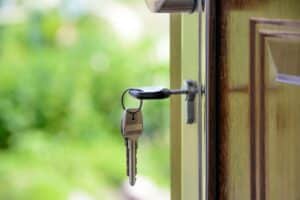Flooding is Australia’s second-deadliest natural disaster after heat waves. While flooding is most commonly linked with overflowing rivers and tropical storm sea surges, it can also occur in regions far from a body of water. Cities can flood under lengthy and strong rains. So, if you live in a flood-prone area ensure you take the necessary steps to prepare your home for floods.
1. Find Out If Your House Is At Risk
To assess your home’s flood risk, several factors must be considered. If you live in a floodplain, your home may be flooded on a frequent basis. The intensity of the rainfall in your location, as well as the closeness of your property to a body of water, may aggravate the flood hazard. Low-lying dwellings are more vulnerable to floods since water always seeks the lowest point on a landscape. Consult your local authorities about flood hazards before you start building a new house.
2. Retrofit Or Build Your House To Code
If you want to build in a floodplain, adhere to a quality above the minimum required standards for new buildings, since these standards are focused on keeping you safe rather than preventing damage to the buildings. Build higher than flood level and use water-resistant materials and fixtures to lessen the risk of water damage. Consider flood-proofing your existing home and check with your local floodplain management organisation or a qualified builder about improvements.
3. Make An Emergency Flood Plan
Having a flood plan will help you stay calm during a forced evacuation. Consider your options if you need to evacuate fast, the safest choice is usually moving to higher ground outside the floodplain. Listen to your local emergency broadcasters for route-specific updates. If you must drive during an evacuation do so cautiously, avoiding dirt, debris, fallen trees and power lines. Never drive through flood waters.
4. Prepare Your Emergency Kit
Have an emergency kit prepared with bottled water, a first aid kit, non-perishable food, medications, a mobile phone and charger, flashlights, and a battery-operated radio with replacement batteries. Buy a sturdy, waterproof container with wheels or handles and label it to make it easier to find in an emergency. Take your important documents like prescriptions, ID, car or property ownership, and insurance coverage.
5. Monitor Weather Warnings
During severe weather, check BOM reports for updates and warnings. In a flood, follow your local emergency services’ instructions, including whether to stay or leave your home.
What To Do After A Flood
- Only return home when officials say it’s safe.
- Disinfect flood contaminated items.
- Beware of debris in flood-receded regions.
- Avoid driving through flood water.
- Avoid standing water because electricity wires may be buried.
- Photograph property damage for insurance.
Conclusion
BOM estimates that floods cost the Australian economy between $400 and $500 million annually; however, according to SES, a well-prepared community can mitigate the effects of flooding by as much as 80%. Obtaining expert guidance can help you better prepare your home for floods.
If you’re looking to buy and are concerned about flood zones, get in touch with us today.
Disclaimer: The information provided is for guidance only and does not replace independent business, legal and financial advice which we strongly recommend. Whilst the information is considered true and correct at the date of publication, changes in circumstances after the time of publication may impact the accuracy of the information provided. PRD will not accept responsibility or liability for any reliance on the blog information, including but not limited to, the accuracy, currency or completeness of any information or links.



